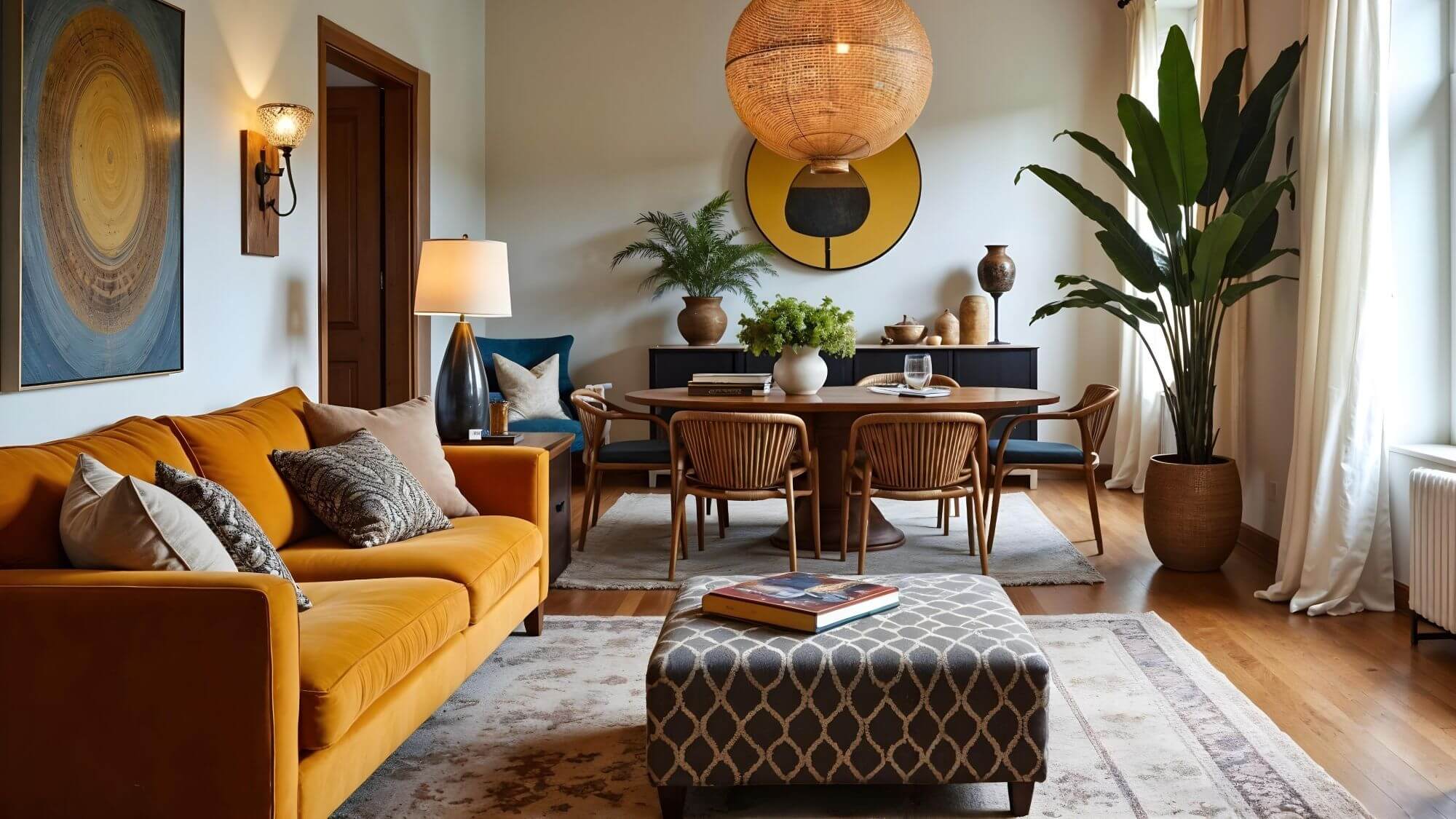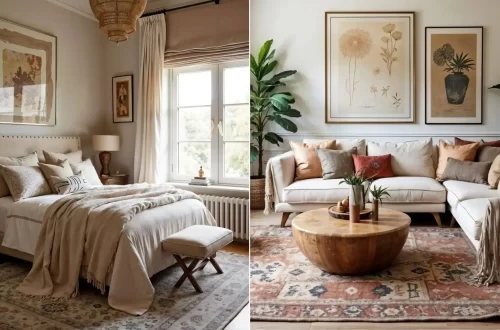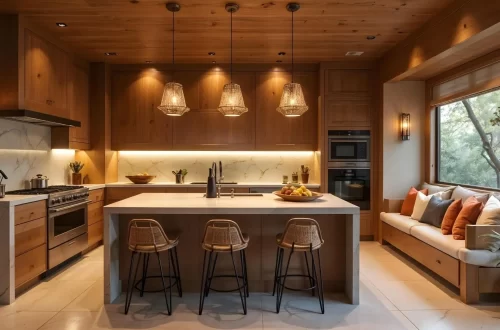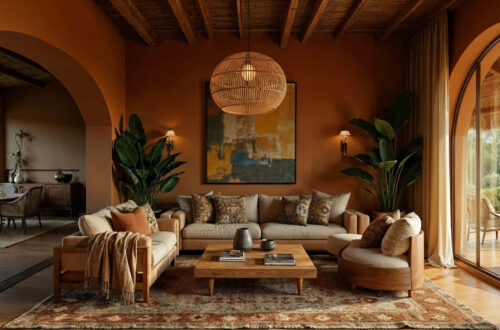Eclectic home design is a movement that has evolved over time, shaped by wanderers, collectors, and creatives who refuse to be boxed into a single aesthetic. It is a reflection of a well-traveled, deeply personal lifestyle—one that embraces contrast, individuality, and the unexpected.
As a young African woman living in Paris and exploring the world, my home is an intricate blend of influences. It’s bringing together the hand-carved wooden figurine from my mother’s home in Dakar, the painting stumbled upon in the streets of Barcelona, and the mid-century accent chair found in a French flea market. Your version of eclecticism may look entirely different, and that’s my favorite thing about it.
Eclectic home design thrives on contrast. In this article, we’ll break down its essence and the five key steps to getting it just right.
In this article:
- What Defines Eclectic Home Design?
- Contrasts to Master in Eclectic Home Design
- 5 Steps to Get Eclectic Home Design Just Right
What Defines Eclectic Home Design?
A Personal Curation of Stories, Objects, and Style
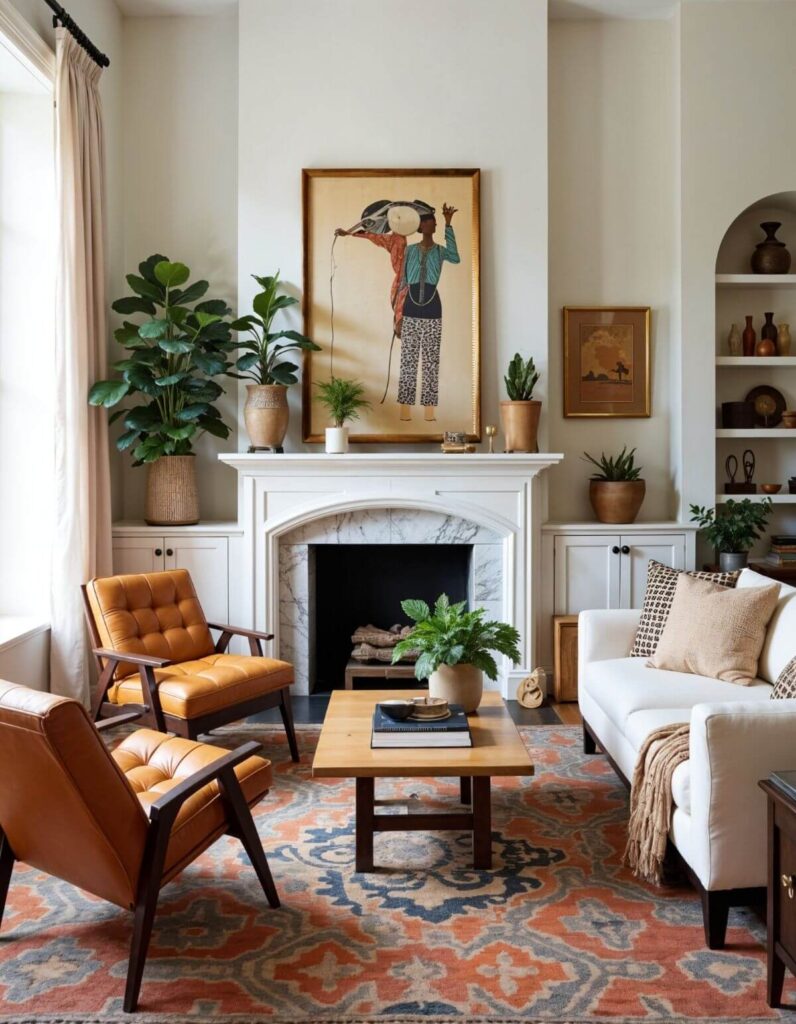
At its core, eclectic home design is all about curation. It’s about bringing together pieces that hold meaning, whether they were collected on travels, inherited from family, or discovered on a spontaneous weekend market stroll. The result? A home that feels sophisticated yet deeply personal.
The trick is in the arrangement—balancing larger statement pieces with smaller treasures, layering objects over time, using side tables, chimney mantels, shelves, and wall niches as the perfect canvases for these carefully curated moments.
Mismatched Yet Harmonious: The Art of Color, Texture & Shape
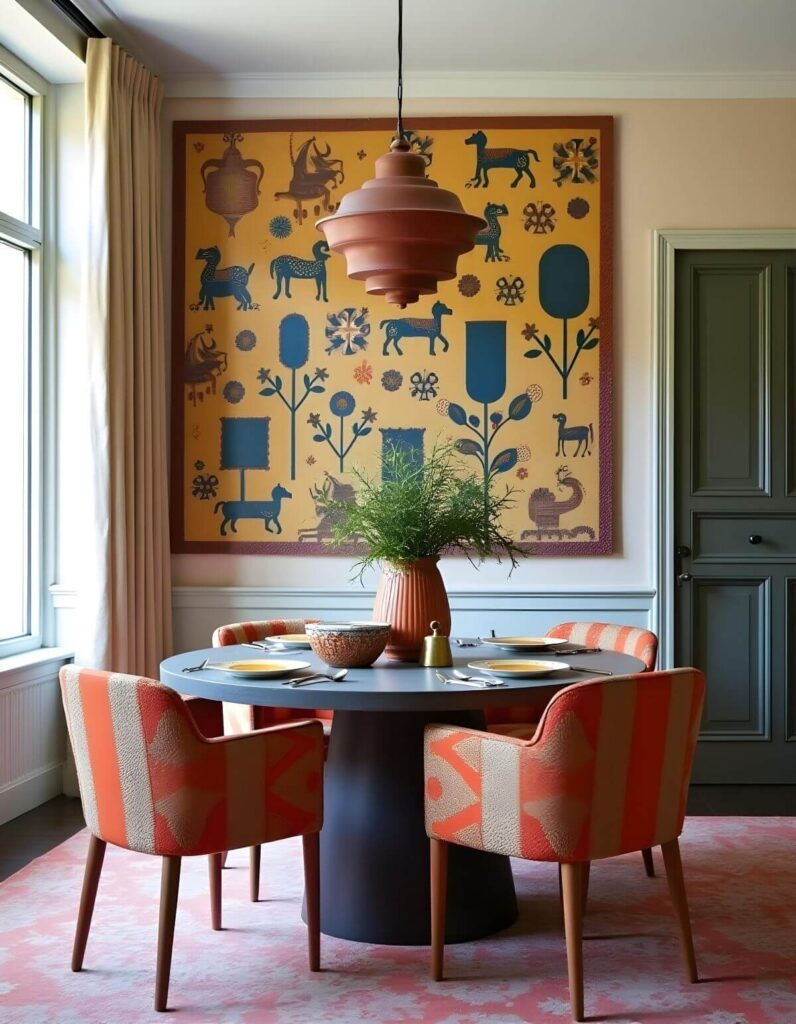
You are multi-dimensional, and your home should be too. Eclectic interiors thrive on unexpected pairings that somehow, effortlessly work together.
- Forget about perfectly matching colors—focus on colors that echo each other, like warm reds, oranges, and browns or soft pastels.
- Distribute color evenly throughout a space rather than concentrating it in one area. A patterned painting can mirror the color of a dining table, while a pendant lamp ties into the legs of a chair.
- Patterns on patterns? Absolutely—but soften them with solid hues and neutral grounding pieces.
- Texture is key. Rough meets smooth, soft meets structured. A woven African basket next to a sleek marble table? Perfection.
Contrasts to Master in Eclectic Home Design
Eclectic style thrives on the interplay of contrast. Here are key juxtapositions that define this design style.
Bold Meets Striking: Statement Pieces Juxtaposed
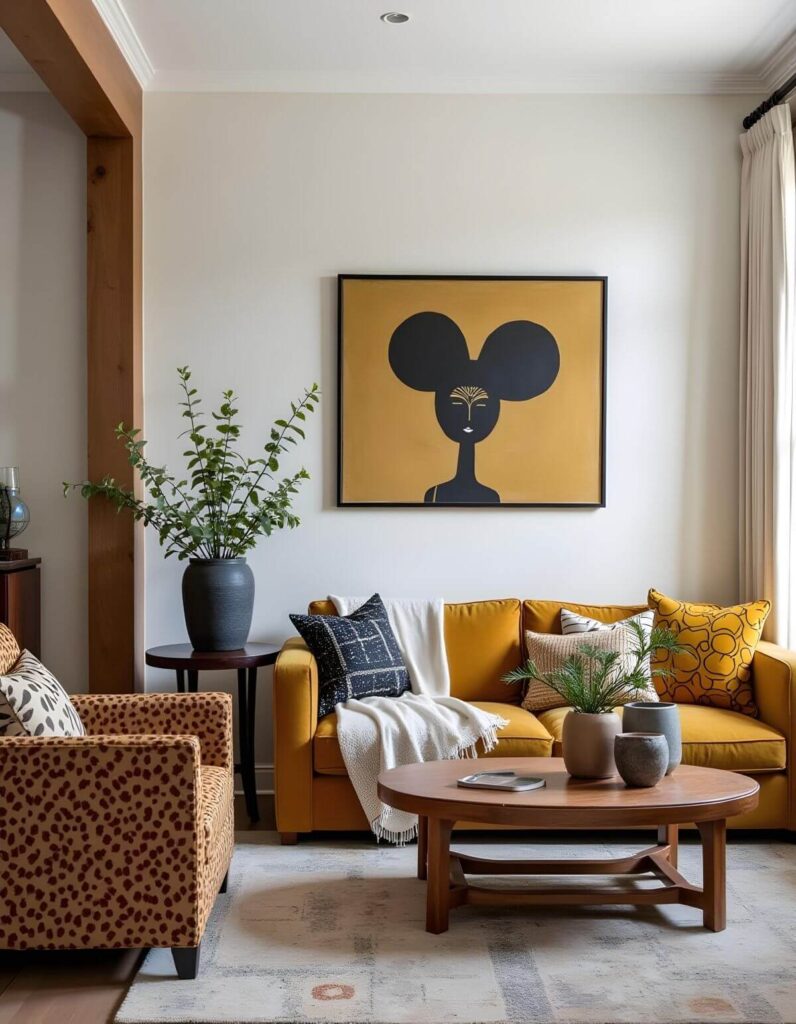
Forget the rule of having just one statement piece. We’re doubling up. Picture a sumptuous mustard-yellow sofa alongside a cheetah-print armchair (because cheetah is my spirit animal). Add a vibrant painting that ties the colors together and a sculptural coffee table that subtly nods to the armchair’s prints. It’s a bold composition that still feels intentional.
Old Meets New: Effortlessly Blending Eras
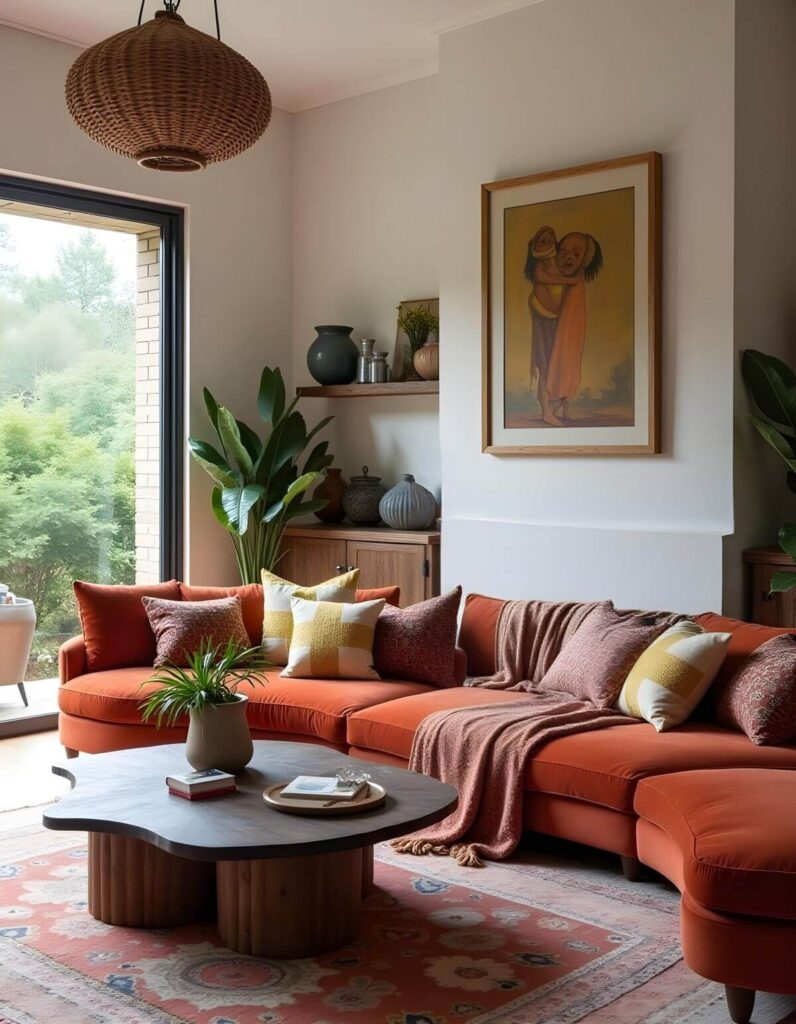
Eclectic spaces blur the lines between periods, seamlessly blending vintage charm with modern edge. Think a velvet Art Deco sofa paired with a contemporary coffee table, all grounded by a stunning vintage Moroccan rug. Add in a rustic pendant lamp and antique clay pots, and the story unfolds beautifully.
Rough Meets Soft: Playing With Textures and Duality
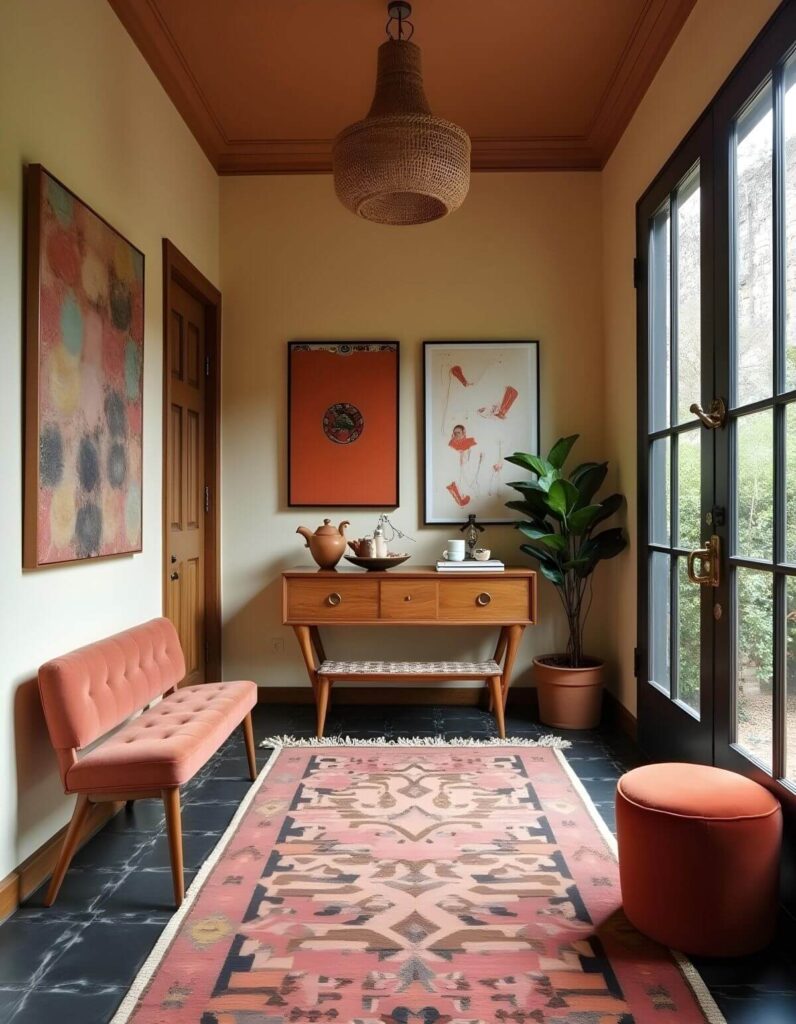
Texture contrast makes a space feel layered and dynamic. A plush, patterned rug over sleek tile flooring. A cozy velvet chair beside a sturdy wooden console. Handwoven African baskets breaking up smooth ceramic vases. The interplay of touchable elements creates warmth and intrigue.
A Curated Mix: Eclecting Home Design means Collecting with Intention
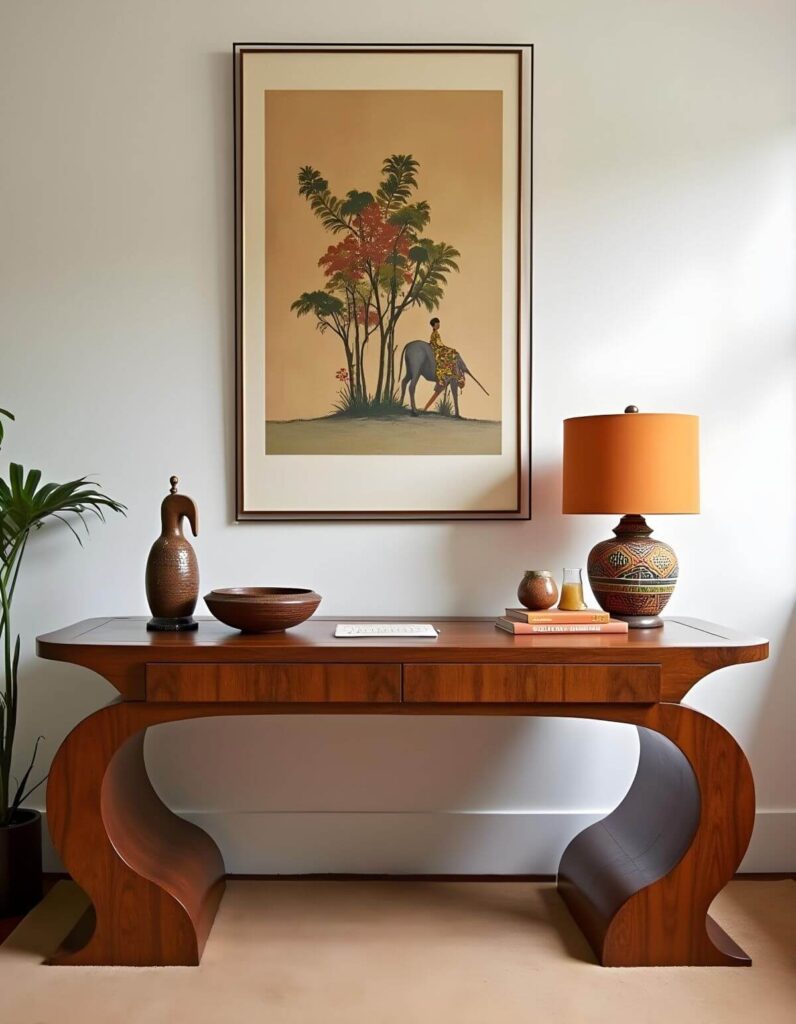
Eclecticism isn’t about randomness; it’s a careful curation. A vintage African table lamp sitting atop a contemporary console, flanked by hand-carved wooden sculptures, tells a cohesive design story. Allow your instincts to guide you—pieces that speak to you will naturally find harmony.
Personalized Spaces: Your Home, Your Narrative
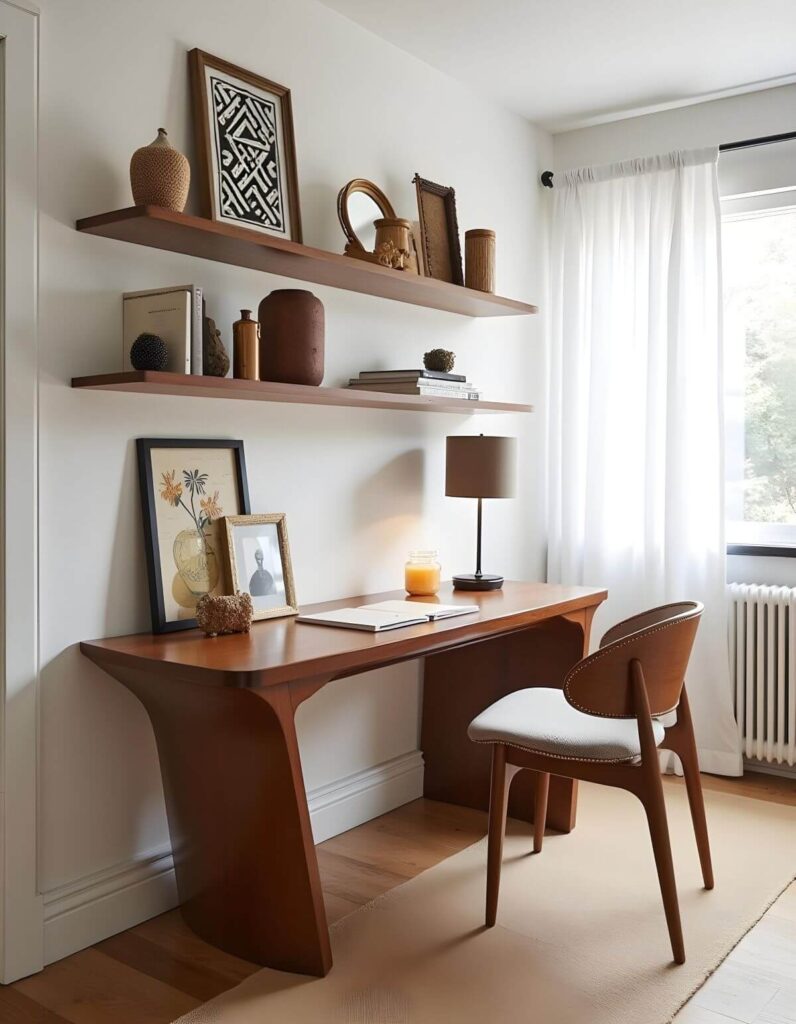
A home should be unapologetically you. Don’t buy something just to follow a trend—choose pieces that resonate. Your space should feel emotionally connected to your life’s experiences. Let it evolve organically, without pressure to rush the process.
5 Steps to Get Eclectic Home Design Just Right
1. Color Blocking: Defining Spaces with Bold Hues
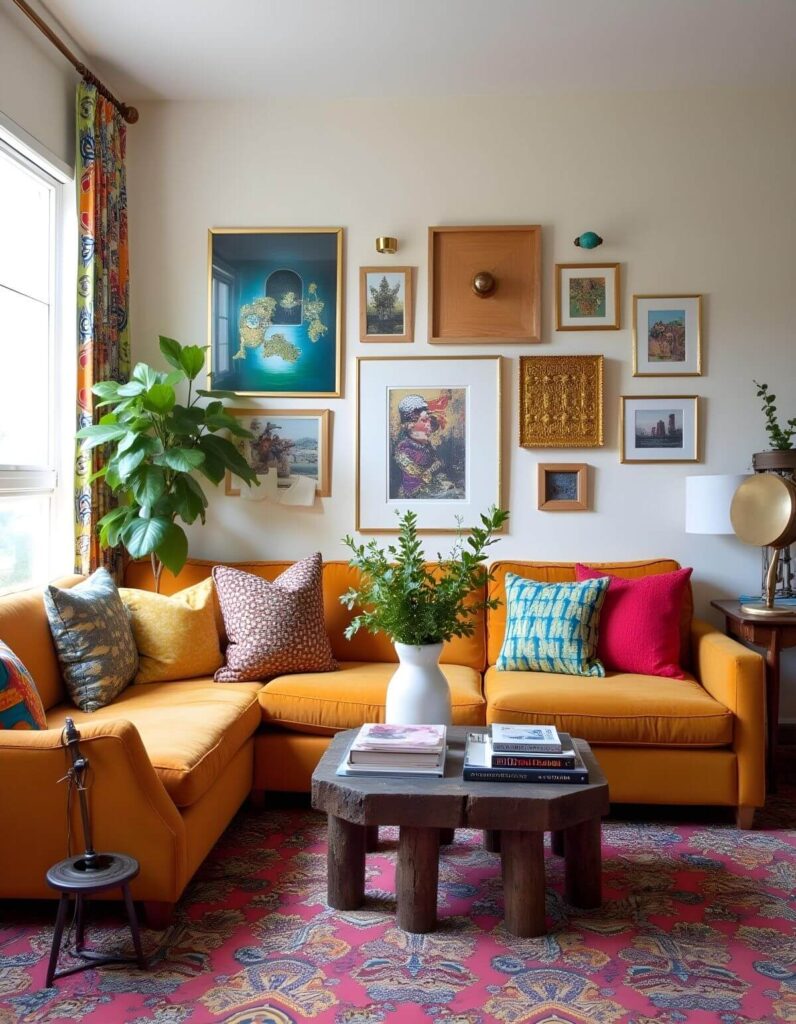
Eclectic design thrives on boldness. How bold? That’s up to you.
- Stick to a maximum of five bold hues: For example, yellow, fuchsia, blue, green, and teal.
- Follow the 60-30-10 rule: The dominant color should cover 60% of the space, the secondary 30%, and the remaining colors share 10%. Neutrals fill the gaps.
- Use varying shades of the same hue for depth—like a soft fuchsia rug paired with bold fuchsia throw pillows.
Searching for striking luxury accent pillows? Eva Sonaike’s cushions are forever favorites.
2. Pattern Play: Layering Prints with Confidence
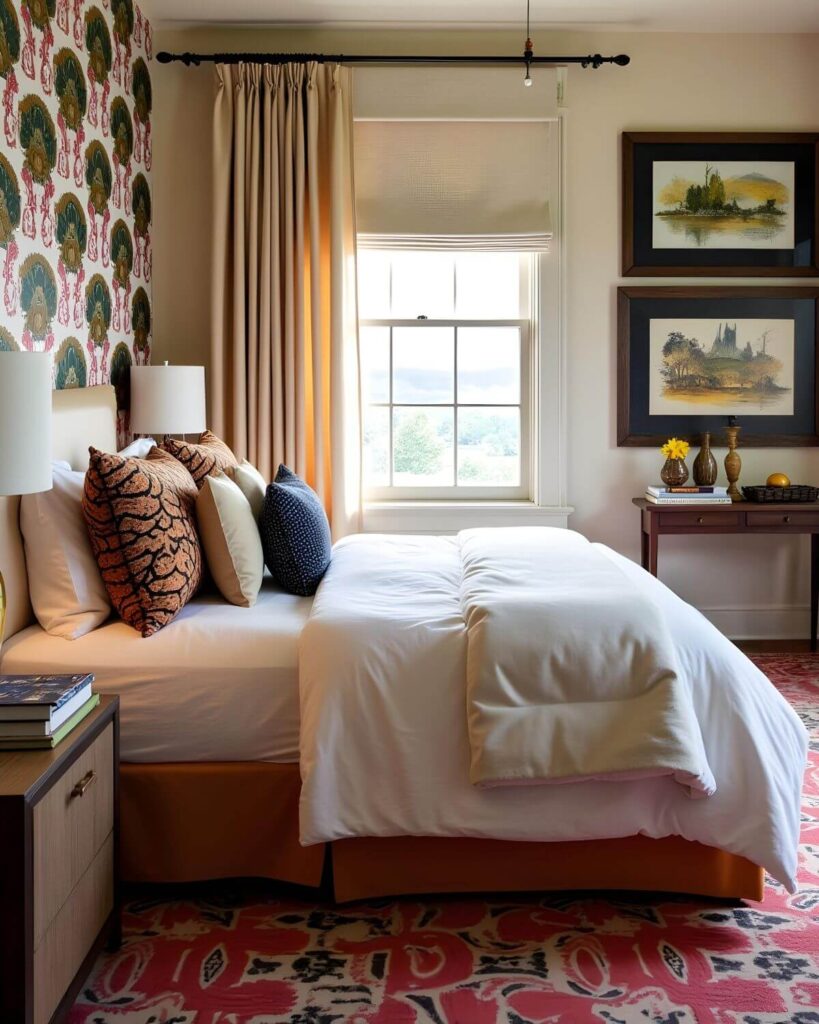
Layering patterns can be intimidating, but these three rules make it effortless:
- Use similar shapes—rounded with rounded, geometric with geometric.
- Play with height—spread patterns from floor to ceiling (rug, throw pillows, wallpaper).
- Cohesive color variation—mix different tones within the same family.
You may also like: How to Style Iconic Mud Cloth in a Modern Home
3. Statement Pieces: Designing Around Unique Focal Points
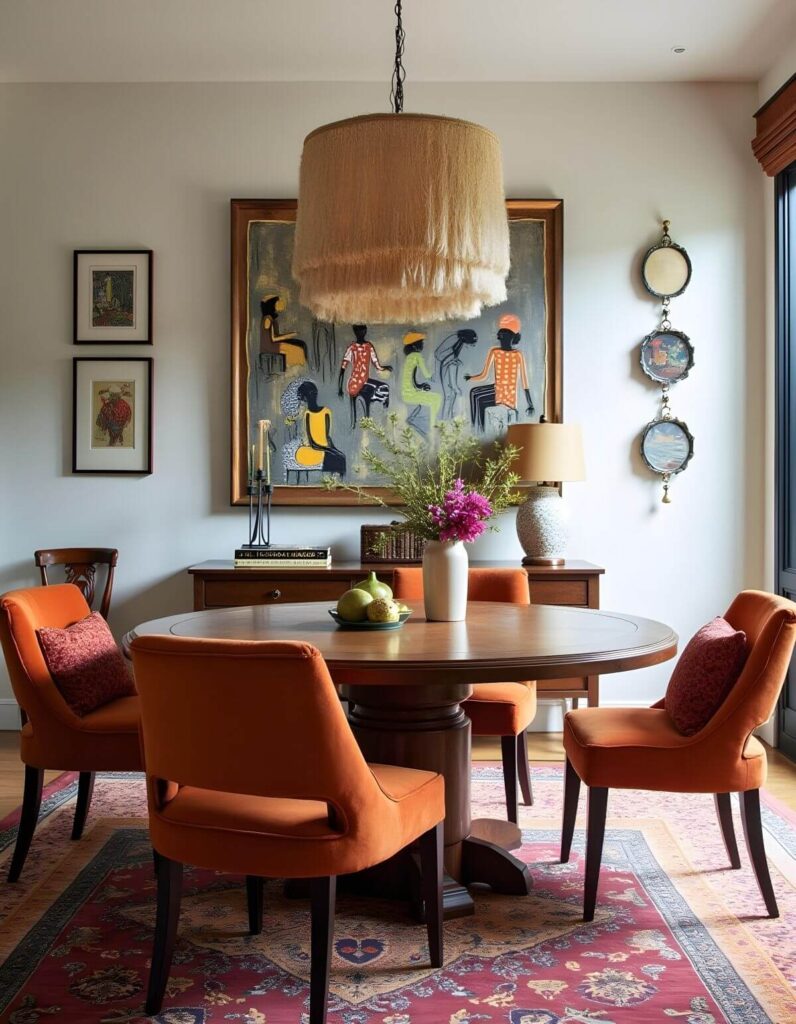
Statement pieces are the soul of eclectic design, but they must work together. Consider a dining room with bold mid-century chairs, a fringe chandelier, and a rich, soulful painting:
- Chandelier as a visual anchor – Draws attention and sets the tone.
- Round table for cohesion – Brings balance and a natural flow with the chair communally sitting around it.
- Artwork as a seamless backdrop – Enhances everything around it without overpowering.
For gorgeous statement pieces, Kanju Interiors’ furniture collection is a must-see.
4. Creating Soulful Moments: Styling Corners in Eclectic Home Design
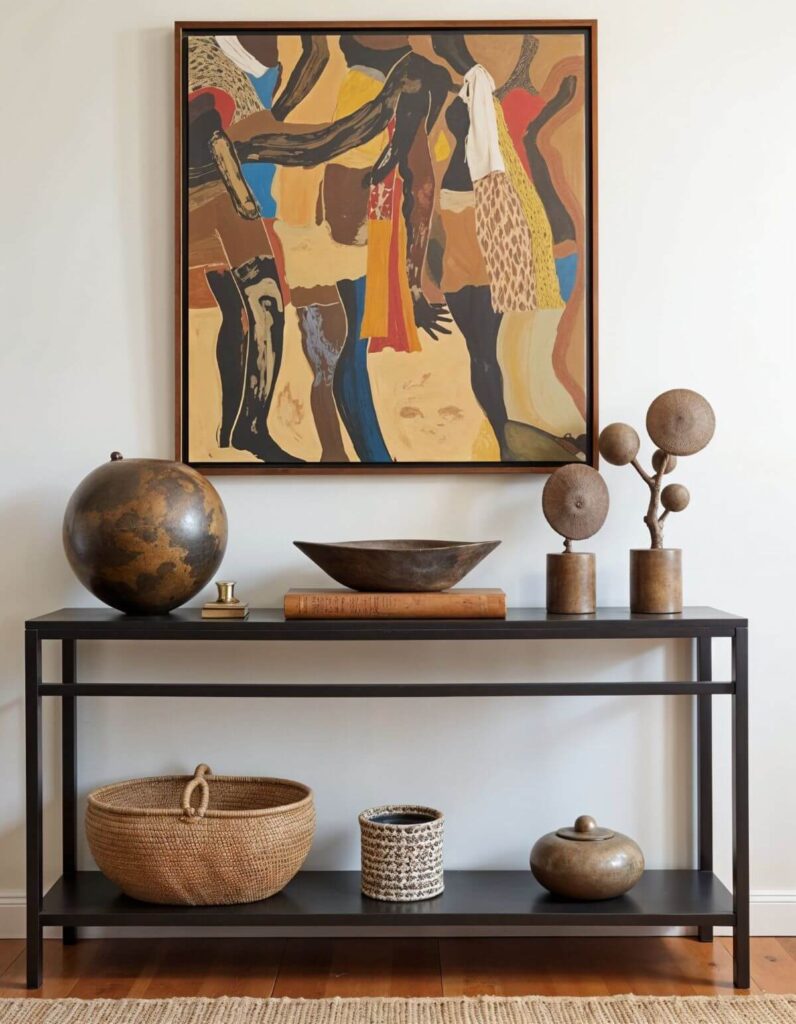
Eclectic home design isn’t just for main rooms—it should flow through every corner of your home. Entryways, hallways, and staircases offer the perfect canvas for intimate vignettes:
- Stack of vintage books – Adds history and personality.
- Ceramic bust – A sculptural element that introduces texture.
- Handwoven basket – A touch of artisanal craftsmanship for warmth.
5. Layering Lighting: The Key to Atmosphere
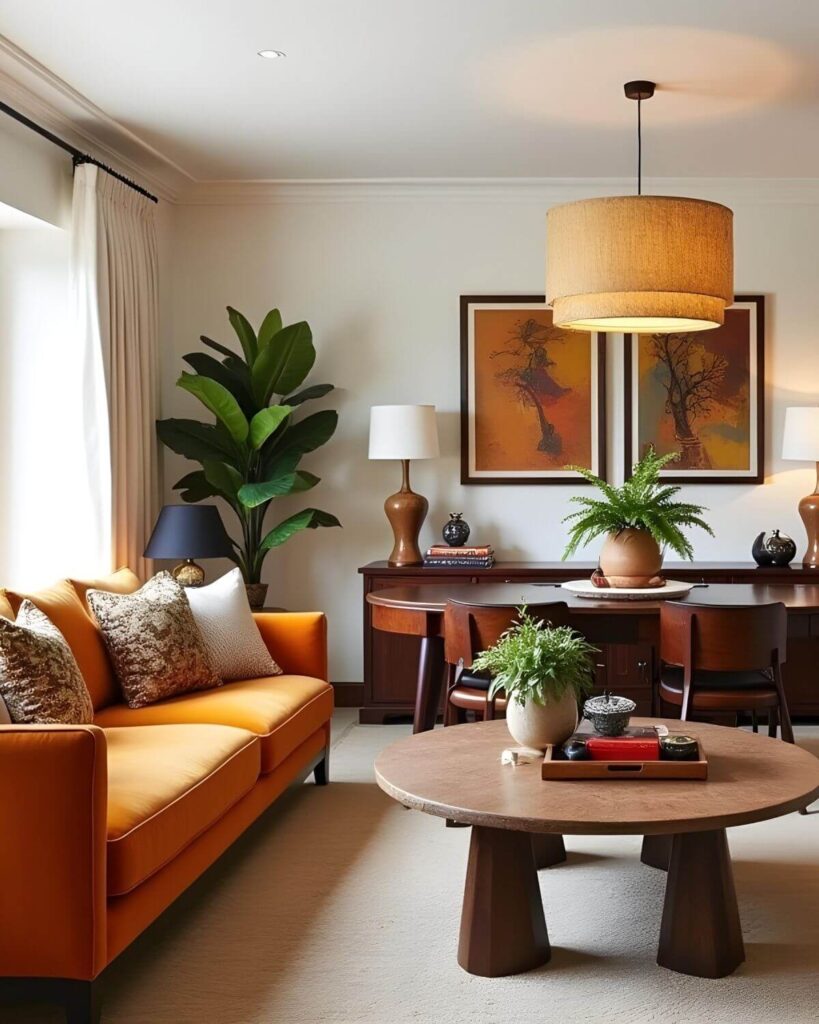
Lighting can make or break a space. In eclectic interiors, variety is essential:
- Overhead statement pendants add drama.
- Table and floor lamps create pockets of warmth.
- Candles soften the ambiance.
- A mix of modern and traditional fixtures keeps things dynamic.
In conclusion, Eclectic home design is a philosophy.
It’s about creating a space that feels lived-in, collected, and uniquely yours. Whether it’s a mix of bold patterns, vintage finds, or carefully chosen color palettes, the magic lies in the unexpected harmony of it all. So curate, layer, and contrast—because the best interiors are the ones that break the rules.
Like eclectic spaces? You’ll love our guide to Afro-Bohemian decorating.

